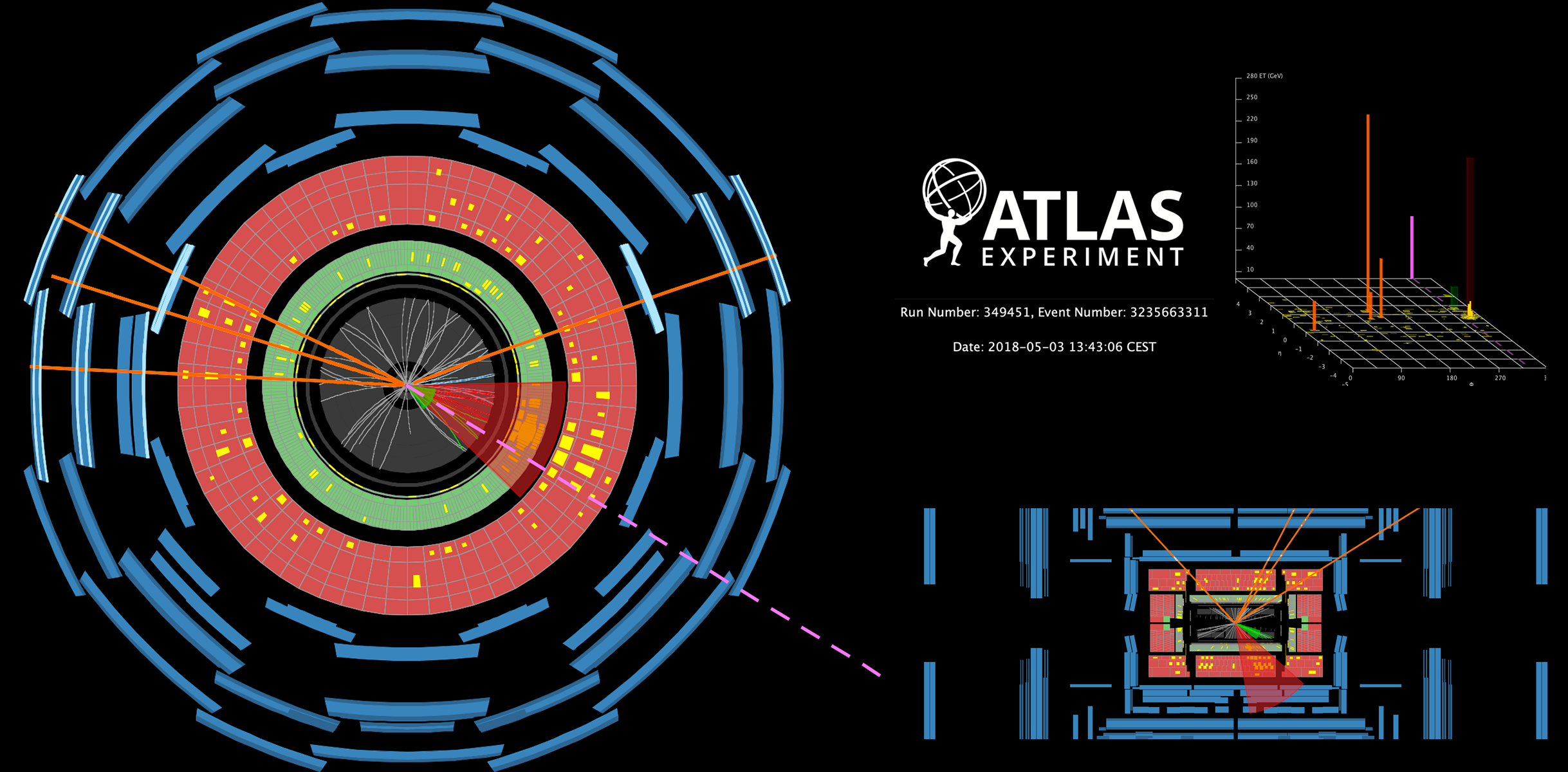ATLAS searches for new particles in familiar decays
5 March 2024 | By
Could the Higgs boson be part of an extended family of particles? Could these new particles be the tools physicists need to discover dark matter? Or explain the matter-antimatter asymmetry of the universe? The two-Higgs-doublet model (2HDM) predicts the existence of a charged Higgs boson, and CP-even (H) and CP-odd (A) Higgs bosons. Expanding this model even further (2HDM+S), these new Higgs bosons could also have a scalar boson cousin (S) that decays into dark-matter particles.
Such theories help the ATLAS Collaboration create targeted searches of LHC collision data. In a new result, researchers conducted a novel search of data collected during Run 2 of the LHC, searching for heavy new particles that could fit the 2HDM or 2HDM+S models. One tested hypothesis considered whether another new scalar particle (R) could decay into H and S bosons, and thus interact with dark matter particles; they also tested whether the new H boson could be a source of matter-antimatter asymmetry. For the first time, researchers considered cases where the new particles decay into Z bosons, leaving a signature in the ATLAS detector with four leptons (electrons or muons) and missing transverse energy (see event display above). This signature would be sensitive to both models.
The primary source of background in this study arises from the Standard-Model production of a Z-boson pair decaying into leptons. To distinguish signal from background, physicists focused on a four-lepton invariant mass distribution above 200 GeV, which is large enough that two Z-bosons can be produced. They then selected signal events based on key event parameters like the momentum of the four-lepton system, missing transverse energy (significance), jet multiplicity, and the number of b-jets.
The new ATLAS study extends the reach of new-physics searches. The allowed region of the 2HDM model was further restricted and the 2HDM+S model with the R extension was tested for the first time ever. Results of the study revealed no significant deviation above Standard-Model backgrounds. Consequently, the findings were translated into upper limits at a 95% confidence level on the cross-section times the branching ratio of heavy resonances. The upper limits were established for particles from both the 2HDM and 2HDM+S models (the H, A and S bosons), covering a broad mass range (see Figure 1).
The search continues, with physicists now set to examine new data coming from Run 3 of the LHC. As their datasets grow, so too does the likelihood of finding rare new particles that may answer open questions of the universe.






